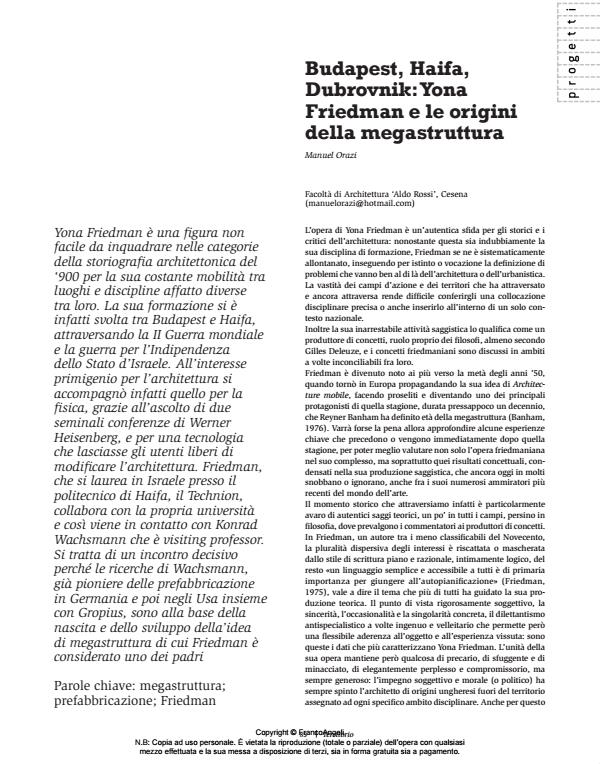Budapest, Haifa, Dubrovnik: Yona Friedman e le origini della megastruttura
Titolo Rivista TERRITORIO
Autori/Curatori Manuel Orazi
Anno di pubblicazione 2014 Fascicolo 2013/67
Lingua Italiano Numero pagine 7 P. 85-91 Dimensione file 2986 KB
DOI 10.3280/TR2013-067014
Il DOI è il codice a barre della proprietà intellettuale: per saperne di più
clicca qui
Qui sotto puoi vedere in anteprima la prima pagina di questo articolo.
Se questo articolo ti interessa, lo puoi acquistare (e scaricare in formato pdf) seguendo le facili indicazioni per acquistare il download credit. Acquista Download Credits per scaricare questo Articolo in formato PDF

FrancoAngeli è membro della Publishers International Linking Association, Inc (PILA)associazione indipendente e non profit per facilitare (attraverso i servizi tecnologici implementati da CrossRef.org) l’accesso degli studiosi ai contenuti digitali nelle pubblicazioni professionali e scientifiche
Yona Friedman is not an easy figure to frame within the categories of twentieth century architectural history because he moved constantly between totally different places and disciplines. He was educated partly in Budapest and partly in Haifa, during the Second World War and the Israeli War of Independence. His primary interest in architecture was in fact accompanied by an interest in physics after attending two seminal conferences by Werner Heisenberg and by an interest in technology which leaves users free to modify architecture. Friedman obtained a degree in Israel from Technion, the Haifa Polytechnic, and thereby came into contact with Konrad Wachsmann who was a visiting professor. This was a decisive meeting because Wachsmann’s research (he was already a pioneer of prefabrication in Germany and then in the United States with Gropius) formed the basis for the birth and then the development of the idea of a megastructure of which Friedman was one of the founders.
Parole chiave:Megastructure; prefabrication; Friedman
Manuel Orazi, Budapest, Haifa, Dubrovnik: Yona Friedman e le origini della megastruttura in "TERRITORIO" 67/2013, pp 85-91, DOI: 10.3280/TR2013-067014